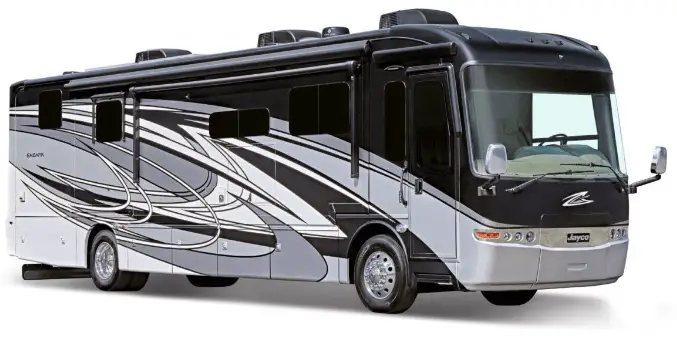Jayco Embark 2023 Formaldehyde User Manual
Formaldehyde
Some components in the recreation vehicle contain formaldehyde-based adhesives that may release formaldehyde fumes into the air for an unknown period of time. Individuals who are allergic to formaldehyde gas fumes may experience irritation to the eyes, ears, nose, and throat. Indoor air quality may also be affected by leaving your vehicle closed for a period of time. To aid in dissipation, ventilate the recreation vehicle by opening all windows and circulate the air with a fan. This label is located inside the vehicle near the entry door. The label should be left permanently affixed to the recreation vehicle.
Extended Or Full-Time Usage
Your new recreation vehicle has been built for enjoyment in a recreational manner. It is not intended for use as full-time quarters or a permanent residence. Continuous living in your vehicle could cause accelerated wear and damage to the various components.
Caution
Continuous or permanent living in your recreation vehicle may affect your warranty coverage and may void the “Limited Warranty” applicable to your vehicle.
Cold Weather Usage
When used in freezing or below-freezing temperatures, the precautions should be taken:
- Fresh water and drainage systems – preparations to avoid freeze-ups.
- Propane gas (if so equipped) and sufficient power is needed for protection from possible freeze-ups on the propane gas regulator. Keep in mind that more frequent furnace operation will substantially increase battery draw and propane gas use.
- During cool weather usage, ventilation or the addition of a dehumidifier may be required to reduce condensation.
- Check outside extrusions on compartment doors, locks, slide-outs, windows, vents, etc., for frozen moisture before operating to avoid damage to parts.
Condensation
Condensation is a natural phenomenon. The amount of condensation will vary with climate conditions, particularly relative humidity. Condensation occurs because there is water vapor present in the air. When the temperature reaches the “dew point” the water vapor in the air condenses and changes to a liquid form.
Proper ventilation or the use of a dehumidifier (customer supplied) will assist in controlling the condensation.
Suggestions to eliminate warm moist air:
- Crack open windows and roof vents to allow warm moist air to escape.
- Open the bath roof vent (if so equipped) approximately ½” when showering.
- Use the range hood fan (if so equipped) when cooking or washing dishes.
- Avoid hanging wet towels (or clothes) inside the recreation vehicle to dry.
- If found in cabinets or closets, open the doors slightly to provide ventilation.
Warning
Condensation may cause dampness, mildew, mold, and staining and, if allowed to continue, it may result in damage to the recreation vehicle (damage caused by condensation is not warrantable). It can also lead to mold or mildew issues, which could be a health hazard.
Vehicle Labels
Decals and data plates used throughout the motor home aid in its safe and efficient operation; others give service instructions. Read all decals, data, and instruction plates before operating your recreation vehicle. Any decal, data, or instruction plate painted over, damaged, or removed should be replaced. Keep a record of the 17-digit chassis vehicle identification number (VIN), the 9-digit serial number, and your license number in the event theft or vandalism requires you to supply this information to the authorities.
Warning
The factory-installed weight labels are specific to the recreation vehicle for which they are supplied and are not interchangeable. Do not remove these labels from your vehicle. If labels are missing contact your dealer or Customer Service for replacements.
- Do not exceed any applicable motor home weight ratings. Doing so could damage your motor home or affect handling and braking characteristics.
- Your motor home braking system is designed and rated for operation at GVWR, not GCWR.
Weight Terms
GAWR – Gross Axle Weight Rating: The value specified by the vehicle manufacturer as the load-carrying capacity of a single axle system, as measured at the tire-to-ground inter-faces. This is the total weight a given axle is capable of carrying.
GCWR – Gross Combined Weight Rating: The value specified by the motor home manufacturer as the maximum allowable loaded weight of the motor home in combination with its towed trailer or towed vehicle. The tongue weight of a towed vehicle/ trailer counts as part of the motor home cargo.
GVWR – Gross Vehicle Weight Rating: The value specified by the manufacturer as the maximum permissible weight of the fully loaded motor home.
OCCC – Occupant and Cargo Carrying Capacity: Is equal to the GVWR of the motor home minus the:
- Weight of the motor home, as completed at the factory
- Weight of all occupants, including the driver
- Weight of all personal cargo
- weight of a full tank of chassis engine fuel
- weight of a full tank of propane (if applicable)
The full weight of potable water, including the water heater and the tongue weight of a towed vehicle/ trailer counts as cargo in or on the motor home. Additions to or other changes made to the motor home after it left the factory will affect (reduce) the OCCC.
UVW – Unloaded Vehicle Weight:
The weight of this motor home as manufactured at the factory with fuel, engine oil, and coolants and if applicable, the weight of a full tank of propane.
Weight and Capacity Labels
The following labels are located on the inward-facing surface of the main entry door of the motor home and on the lower sidewall left of the driver’s seat.
[amalinkspro_table id=”32452″ new-window=”on” nofollow=”on” addtocart=”off” /]
Reference Links
View Full User Guide: Jayco Embark 2023 User Manual
Download Manuals: https://www.jayco.com/manuals


